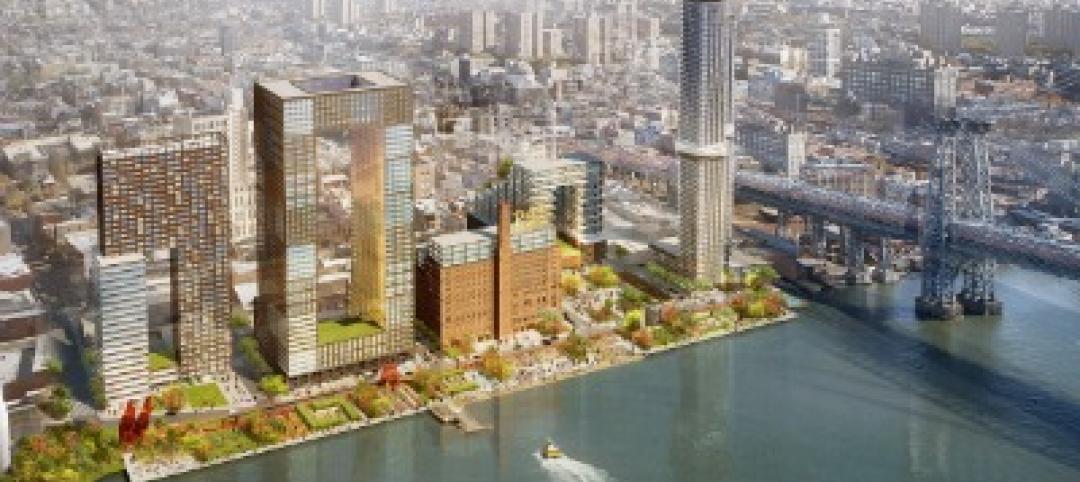Transwestern has released a report examining a number of creative office projects that have generated substantial returns for investors upon completion. The adaptive reuse developments span Boston, Chicago, Los Angeles, New York, Phoenix, San Francisco, and Austin, Texas. The report also highlights 20 additional large creative office projects currently underway across the country.
Michael Soto, Director of Research in Southern California and co-author of the report, explains that while creative office conversions are not new, what is different this cycle is the sheer volume of creative office exits nationally at core/core-plus pricing that have occurred during the past five years – with the buyers being major institutional investors or well-known owner/users.
“The conversion of a property from industrial or retail use to creative office has become an increasingly popular value-add strategy for investors,” Soto says in a release. “Two trends are fueling demand for this type of differentiated office product: One, technology, advertising, media and other companies trying to attract millennials are interested in the characteristic features of creative office space – open floor plans, natural lighting, common spaces and amenities such as cafés and rec rooms. And two, tenants are returning to cities, where they can take advantage of live/work/play environments.”
Based on favorable exit pricing of some major creative office projects around the country, this type of value-add strategy, on this large scale, is now being considered by developers, either via direct investment or joint-venture partnerships with equity partners. Conversely, stabilized creative office properties are on the radar of many national and international institutional buyers that are paying traditional trophy Class A pricing for these types of properties, usually based on the credit-worthiness of the tenant, as well as the location of the project.
The report cautions, however, that many of these projects were acquired and developed under very different economic conditions than exist today.
“Rising land, building and construction costs – especially in hot neighborhoods – may add more risk when compared to a few years ago, when we were at a different point in the real estate cycle,” said Sandy McDonald, Director of Research in Chicago and co-author of the report. “In addition, adaptive reuse often comes with hidden costs and potentially expensive future property modifications.”
Moreover, the popularity of the creative office concept means that there is more inventory in the market today. Landlords that own existing office buildings or are doing ground-up development are realizing that they must consider strategic property enhancements and creative office-associated tenant amenities to stay competitive in the marketplace.
To view the complete report, titled Creative Office Projects: Adaptive Reuse Generates Staggering Returns for Investors, click here.
Related Stories
| Apr 22, 2013
Top 10 green building projects for 2013 [slideshow]
The AIA's Committee on the Environment selected its top ten examples of sustainable architecture and green design solutions that protect and enhance the environment.
| Apr 19, 2013
7 hip high-rise developments on the drawing board
Adrian Smith and Gordon Gill's whimsical Dancing Dragons tower in Seoul is among the compelling high-rise projects in the works across the globe.
| Apr 15, 2013
Advanced lighting controls and exterior tactics for better illumination - AIA/CES course
To achieve the goals of sustainability and high performance, stakeholders in new construction and renovation projects must rein in energy consumption, including lighting. This course presents detailed information about lighting control strategies that contribute to energy efficient buildings and occupant well-being, as well as tips for lighting building exteriors effectively and efficiently.
| Apr 6, 2013
First look: GlaxoSmithKline's double LEED Platinum office
GlaxoSmithKline and Liberty Property Trust/Synterra Partners transform the work environment with the opening of Five Crescent Drive
| Apr 5, 2013
No evidence that mandatory building energy labeling improves efficiency, study says
The Building Owners and Managers Association (BOMA) International and the Greater Boston Real Estate Board (GBREB) released a report, “An Economic Perspective on Building Labeling Policies,” that questions the efficacy of mandatory building energy labeling.
| Apr 5, 2013
'My BIM journey' – 6 lessons from a BIM/VDC expert
Gensler's Jared Krieger offers important tips and advice for managing complex BIM/VDC-driven projects.


















